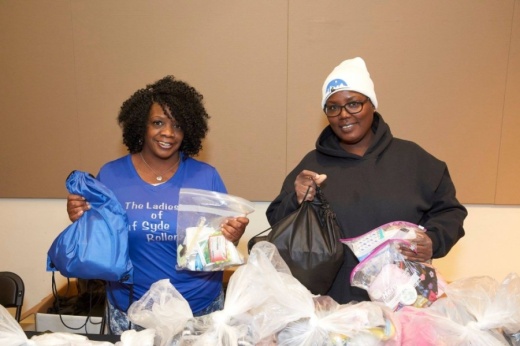The biggest change is that the count will not utilize volunteers, said David Gruber, the senior development and communications director with the Metro Dallas Homeless Alliance. Instead, outreach workers who interact with those experiencing homelessness as part of their day-to-day jobs will make up a team of about 100 to tackle the count.
These workers have trained to be safe about the spread of the coronavirus in their work over the better part of the last year, making it safer for them to interact with the homeless population, Gruber said.
"You're not going to send out hundreds of volunteers to interact with a medically fragile population," Gruber said. "Homeless folks are three to four more times susceptible to catching COVID-19 than you or I."
To make the workload of the count more feasible with a tenth of the workforce, it will take place over a period of 14 days instead of one night. From Feb. 18-March 3, workers will gradually cover the entire area that needs to be covered.
Typically, a series of survey questions are asked of each person found unsheltered on the night of the count. These answers give some insight into the changing trends of homelessness, as well as measuring the success of a city in making homelessness rare, brief and nonrecurring.
This year, that survey will be brief, Gruber said. It will ask just enough information to identify a person—to keep from having duplicate responses—and to answer the question of if, and by how much, the coronavirus pandemic may have raised the number of those facing homelessness in Dallas and Collin counties. Keeping interactions brief will also help keep spread of the coronavirus low, Gruber said.
"Some information is better than no information," Gruber said. "And we have a lot of other methods that we use throughout the year to count folks and keep track of them."
Regardless of the night of the count, workers will ask those they find unsheltered where they were on the night of Feb. 18. This will help create a snapshot more similar to the typical count, Gruber said.
These changes to the way the count will work are based on guidance from the federal government, according to Gruber. The Metro Dallas Homeless Alliance serves as the backbone, or lead, organization for Dallas and Collin counties and works with Collin County cities and the Collin County Homeless Coalition for actions like the point-in-time count.
The data from the two counties' count is submitted to the U.S. Department of Housing and Urban Development and is combined with other counts at the state and national level. The department requires all communities that apply to use its funding for serving the homeless to count the unsheltered and sheltered homeless, typically on one night of the year in late January.
The count of those facing homelessness who are sheltered will look much like in previous years, Gruber said. Additionally, workers will continue to give out care packages to those found unsheltered during the count, as volunteers did in previous years, he said.
A virtual kickoff event for the count will take place Feb. 18 and will include some footage of workers preparing for the count as well as words from a few community leaders, Gruber said.





